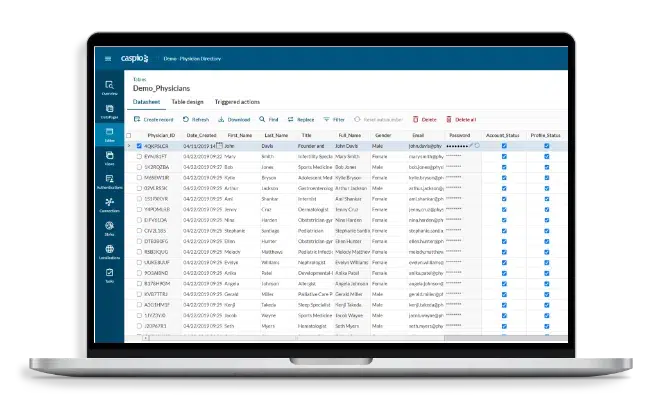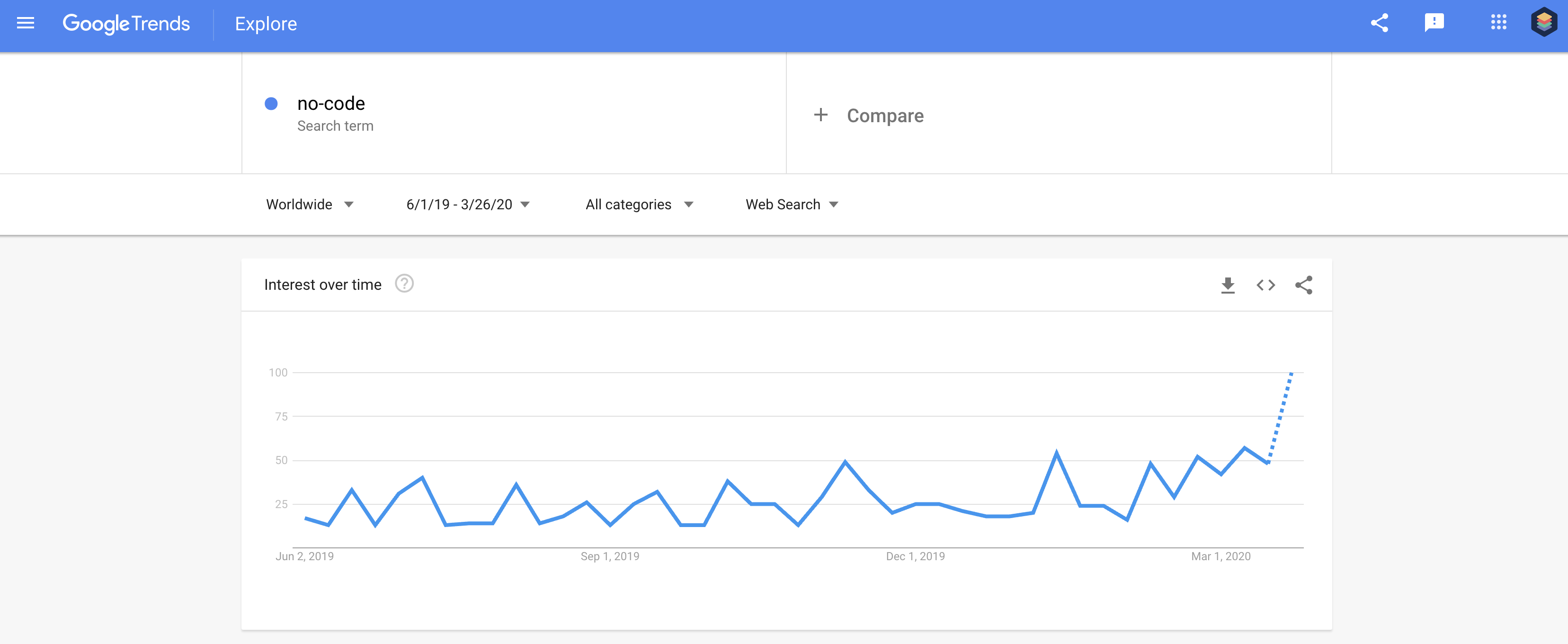Just How No-Code Tools Simplify Open System Database Development for Everyone
Just How No-Code Tools Simplify Open System Database Development for Everyone
Blog Article
A Comprehensive Guide to Executing Scalable Databases Without the Need for Coding Competence
In the modern landscape of information monitoring, the capacity to implement scalable databases without coding knowledge is ending up being significantly important for organizations of all sizes. This guide intends to brighten the process, concentrating on easy to use tools and intuitive interfaces that debunk data source arrangement. By examining essential features, effective approaches for execution, and ideal methods for continuous management, we will deal with how also non-technical customers can confidently navigate this facility surface. What are the essential components that can genuinely equip these users to leverage scalable data sources efficiently? The responses may redefine your strategy to information monitoring.
Recognizing Scalable Databases
In the world of modern data monitoring, scalable databases have arised as a vital service for companies seeking to take care of enhancing quantities of information successfully. These databases are created to fit development by enabling the smooth addition of resources, whether via horizontal scaling (including much more equipments) or vertical scaling (upgrading existing equipments) This flexibility is necessary in today's fast-paced electronic landscape, where information is produced at an unprecedented price.
Scalable data sources normally make use of distributed designs, which enable information to be spread out throughout multiple nodes. This distribution not only boosts efficiency but likewise gives redundancy, ensuring data accessibility also in case of hardware failings. Scalability can be a critical element for different applications, consisting of e-commerce platforms, social media networks, and huge data analytics, where user demand can change significantly.
Moreover, scalable data sources commonly include durable data consistency models that balance performance and reliability. Organizations needs to consider their details requirements, such as read and compose rates, data integrity, and fault tolerance when selecting a scalable data source solution. Ultimately, comprehending the underlying principles of scalable databases is vital for businesses aiming to flourish in an increasingly data-driven globe.
Secret Functions to Search For
When assessing scalable databases, several vital attributes are extremely important to ensuring optimum efficiency and dependability. Take into consideration the style of the database. A distributed style can improve scalability by enabling information to be saved across multiple nodes, helping with smooth data access and handling as demand boosts.
Another crucial feature is information partitioning, which makes it possible for effective management of large datasets by dividing them into smaller sized, much more convenient pieces (no-code). This approach not only improves efficiency but additionally simplifies source allowance
Additionally, try to find robust duplication abilities. This attribute guarantees information redundancy and high accessibility, minimizing downtime during maintenance or unanticipated failures.
Efficiency surveillance tools are additionally vital, as they provide real-time understandings right into system health and wellness and operational performance, permitting prompt adjustments to preserve ideal performance.

User-Friendly Data Source Equipment
Simplicity is a vital aspect in the design of user-friendly data source tools, as it boosts access for individuals with varying levels of technological expertise. no-code. These devices prioritize instinctive interfaces, enabling individuals to create, see this here take care of, and inquiry databases without calling for substantial programming expertise
Key attributes commonly consist of drag-and-drop functionality, aesthetic data modeling, and pre-built themes that streamline the arrangement process. Such devices often offer assisted tutorials or onboarding procedures that promote user engagement and decrease the understanding curve. Furthermore, smooth integration with preferred information sources and services makes certain that users can quickly import and export information, further simplifying procedures.

Additionally, robust assistance and neighborhood resources, such as online forums and documentation, boost the individual experience by providing help when needed. On the whole, easy to use data source tools encourage organizations to harness the power of scalable data sources, making data monitoring easily accessible to everyone entailed.
Step-by-Step Implementation Guide
Just how can organizations properly execute scalable data sources to satisfy their expanding data requirements? The procedure begins with determining specific information requirements, consisting of the volume, range, and rate of data that will certainly be refined. Next off, organizations should examine user-friendly database devices sites that offer scalability attributes, such as cloud-based services or took care of database services.
When the appropriate tool is chosen, the following step involves configuring the data source setting. This consists of establishing circumstances, defining user approvals, and establishing data frameworks that straighten with business purposes. Organizations needs to then move existing information right into the new system, making sure information integrity and minimal interruption to procedures.
Post-migration, conducting complete screening is critical; this consists of performance screening under different tons problems to make certain the system can handle future growth - no-code. Additionally, it is necessary to educate team on the data source management user interface to promote smooth use
Ideal Practices for Monitoring
Reliable management of scalable databases requires a tactical method that prioritizes continuous monitoring and optimization. To achieve this, organizations should carry out durable tracking tools that offer real-time insights into data source efficiency metrics, such as question action times, resource utilization, and purchase throughput. Regularly evaluating these metrics can help recognize traffic jams and areas for renovation.
Regular backups and catastrophe recuperation strategies are vital to secure information integrity and availability. Developing a regular for testing these backups will make sure a reliable healing process in situation of an unanticipated failing.
Additionally, efficiency tuning need to be a constant procedure. Changing indexing strategies, enhancing queries, and scaling resourcesâEUR" whether vertically or horizontallyâEUR" will certainly help preserve optimal performance as use demands progress.
Lastly, promoting a navigate to this website society of expertise sharing among employee will make it possible for continuous discovering and adaptation, making sure that the monitoring of scalable databases continues to be efficient and efficient gradually.
Conclusion
Finally, the execution of scalable databases can be efficiently attained without coding know-how via the usage of easy to use devices and intuitive interfaces. By sticking to the outlined methods for configuration, information movement, and performance screening, people can browse the complexities of database administration effortlessly. Stressing best practices for ongoing maintenance and collaboration more boosts the capacity to take care of scalable data sources efficiently in a rapidly developing data-driven atmosphere.
In the contemporary landscape of data management, the ability to carry out scalable data sources without coding expertise is becoming increasingly essential for organizations of all dimensions.In the world of modern-day information administration, scalable databases have actually arised as an important option for organizations seeking to handle raising quantities of info efficiently.Furthermore, scalable data sources commonly feature robust information uniformity designs that balance efficiency and dependability.How can companies properly carry out scalable databases to meet their expanding data needs? Next off, organizations need to examine user-friendly database tools that offer scalability attributes, such as cloud-based options or handled data source solutions.
Report this page